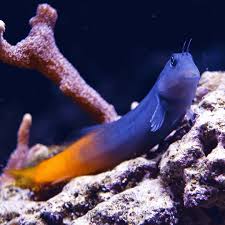Dragons in Chinese History and Legends: From Ancient Times to the Modern Era
Dragons (龙, lóng) hold a sacred and revered position in Chinese history, mythology, and cultural traditions. Unlike Western dragons, which are often depicted as fearsome creatures, Chinese dragons symbolize wisdom, power, protection, and prosperity. The dragon’s role has evolved over centuries, from ancient legends and imperial symbolism to modern representations in art, literature, and festivals.
This article explores the historical development of the dragon in Chinese mythology and folklore, tracing its transformation from ancient myths to its modern-day significance in China.
1. The Origins of the Dragon in Ancient Chinese Mythology
1.1 The Dragon as a Primordial Being
The earliest depictions of dragons in China date back to the Neolithic period (circa 5000 BCE). Archaeological discoveries, such as the jade dragon totems of the Hongshan culture (红山文化) and the coiled dragon motifs of the Liangzhu culture (良渚文化), indicate that the dragon was a spiritual and cosmic symbol long before the formation of Chinese dynasties.
Ancient Chinese mythology describes dragons as powerful beings that shaped the world. Some early beliefs include:
- Pangu (盘古) and the Cosmic Dragon: According to legend, Pangu, the first being, created the world, and dragons were among the divine creatures born from chaos, embodying the forces of nature.
- Nuwa (女娲) and the Serpent-Dragon Form: The goddess Nuwa, who created humans, was often depicted as having a dragon-like lower body, suggesting that early deities had serpentine or dragon features.
1.2 Dragons in the Xia, Shang, and Zhou Dynasties
During the Xia (夏朝), Shang (商朝), and Zhou (周朝) dynasties, dragons were associated with heavenly power and rulers. Some key aspects include:
- The Shang Dynasty (1600–1046 BCE): Oracle bones from the Shang period reference dragons as divine protectors of kings.
- The Zhou Dynasty (1046–256 BCE): The “Book of Changes” (I Ching, 易经) describes the dragon as a symbol of transformation and wisdom, indicating the influence of dragons on philosophical thought.
These early representations established the dragon as an emblem of royalty and cosmic balance, a concept that would persist throughout Chinese history.
2. The Dragon as an Imperial Symbol in Ancient China
2.1 The Dragon as the Symbol of the Emperor
By the time of the Han Dynasty (206 BCE – 220 CE), the dragon had become the exclusive emblem of the emperor. The five-clawed dragon (五爪龙) was reserved for the Son of Heaven, while nobles and officials were only permitted to use four-clawed dragons.
- The Yellow Emperor (黄帝): One of China’s legendary ancestors, the Yellow Emperor, was said to have ascended to the heavens on a golden dragon, solidifying the dragon’s role as a divine ruler.
- The Qin and Han Dynasties: The dragon was seen as a manifestation of imperial power, appearing on robes, palaces, and state banners.
2.2 The Nine Dragon Sons in Chinese Imperial Culture
During the Ming Dynasty (1368–1644 CE), Chinese mythology introduced the Nine Dragon Sons (九子龙), each with distinct characteristics and responsibilities:
- Qiuniu (囚牛) – A music-loving dragon often found on instrument decorations.
- Yazi (睚眦) – A fierce, warlike dragon depicted on swords and weapons.
- Chaofeng (嘲风) – A courageous dragon often carved on palace roofs.
- Pulao (蒲牢) – A roaring dragon symbolizing bell sounds.
- Suanni (狻猊) – A lion-like dragon representing fire and incense burners.
- Bixi (赑屃) – A turtle-shaped dragon associated with monuments and tombstones.
- Bi’an (狴犴) – A justice dragon, appearing on courtroom decorations.
- Fuxi (负屃) – A literary dragon found in library inscriptions.
- Chiwen (螭吻) – A water dragon guarding against fires on rooftops.
These dragon sons reflected the integration of dragons into imperial architecture, literature, and legal systems.
3. Dragons in Chinese Folklore and Popular Legends
3.1 The Legend of the Dragon Gate (鲤鱼跳龙门)
One of the most famous dragon legends tells of a carp that transformed into a dragon by leaping over the Dragon Gate waterfall. This story became a metaphor for:
- Academic success (passing imperial examinations).
- Social mobility and perseverance (overcoming challenges).
3.2 The Four Dragon Kings (四海龙王)
Chinese folklore describes four Dragon Kings, each ruling one of the four seas:
- The Azure Dragon of the East (青龙) – Controls the East China Sea.
- The Vermilion Dragon of the South (赤龙) – Governs the South China Sea.
- The Black Dragon of the North (玄龙) – Rules the Bohai Sea.
- The White Dragon of the West (白龙) – Commands the Yellow Sea.
These dragons were believed to control rain and weather, playing key roles in agricultural prosperity.
4. The Role of Dragons in Modern Chinese Culture
4.1 Dragons in Chinese New Year and Festivals
Even today, dragons remain central to many traditional celebrations:
- The Dragon Dance (舞龙): A key performance during Chinese New Year, symbolizing good fortune and prosperity.
- The Dragon Boat Festival (端午节): Honors Qu Yuan, a poet who drowned himself in a river. Villagers rowed boats in a dragon’s shape to scare away evil spirits.
4.2 The Dragon in Martial Arts and Cinema
In modern pop culture, dragons have inspired:
- Martial Arts Legends: Bruce Lee’s nickname, “The Little Dragon” (小龙), reinforced the dragon’s symbolism of strength and agility.
- Fantasy Films: Chinese cinema, such as “Crouching Tiger, Hidden Dragon” (卧虎藏龙) and “The Legend of the White Snake”, continues to depict dragons as mystical and powerful beings.
4.3 The Dragon as a National Identity Symbol
The dragon remains a symbol of Chinese heritage and pride. In contemporary China:
- The phrase “Descendants of the Dragon” (龙的传人) is often used to refer to the Chinese people.
- The dragon motif appears in modern Chinese fashion, architecture, and sports.
Conclusion
From ancient mythology and imperial rule to folklore, martial arts, and modern national identity, the dragon has remained one of the most enduring and versatile symbols in Chinese culture. Unlike Western dragons associated with destruction, Chinese dragons represent wisdom, protection, strength, and prosperity.
Even in the 21st century, the dragon continues to inspire, evolve, and unite the Chinese people, demonstrating the timeless power of this legendary creature.









